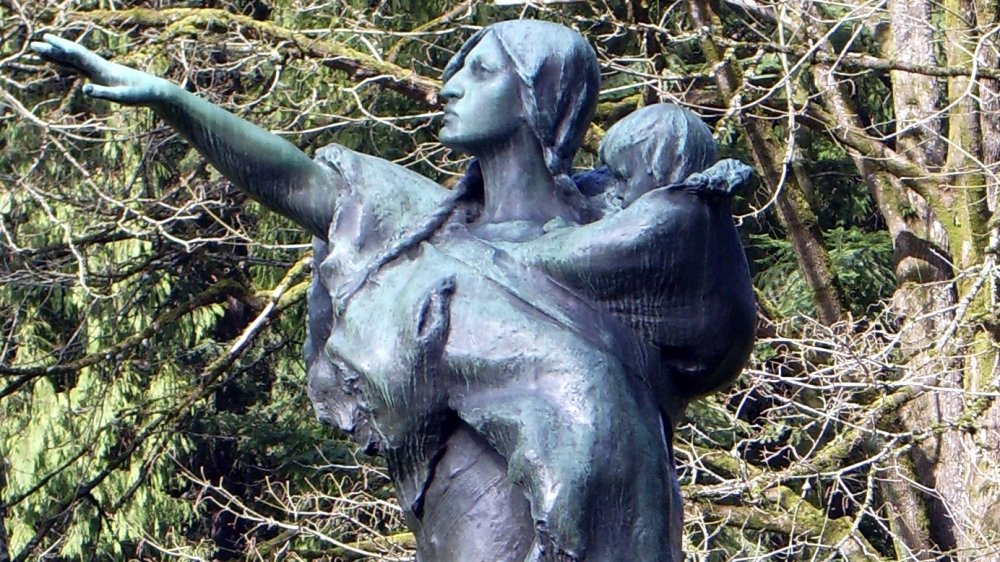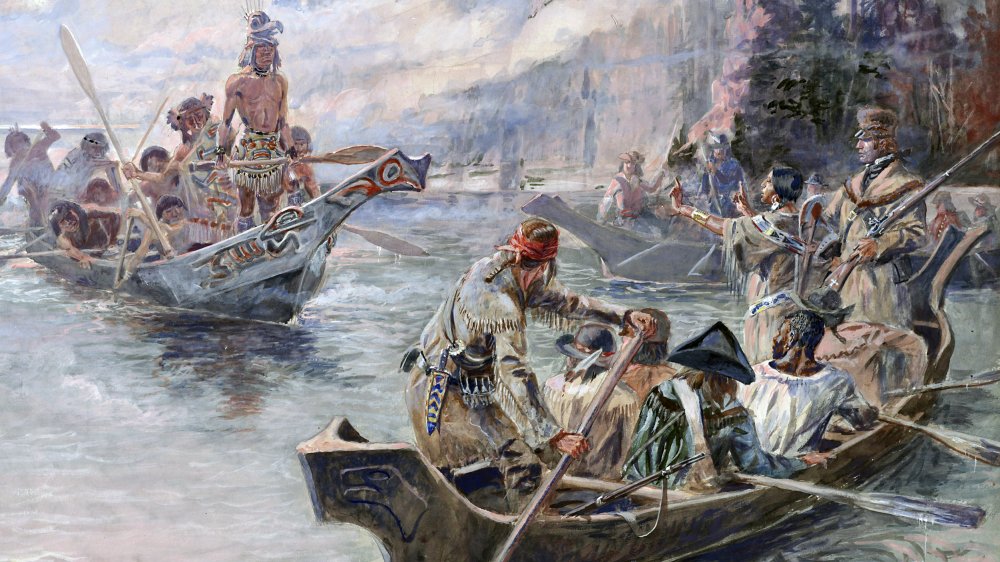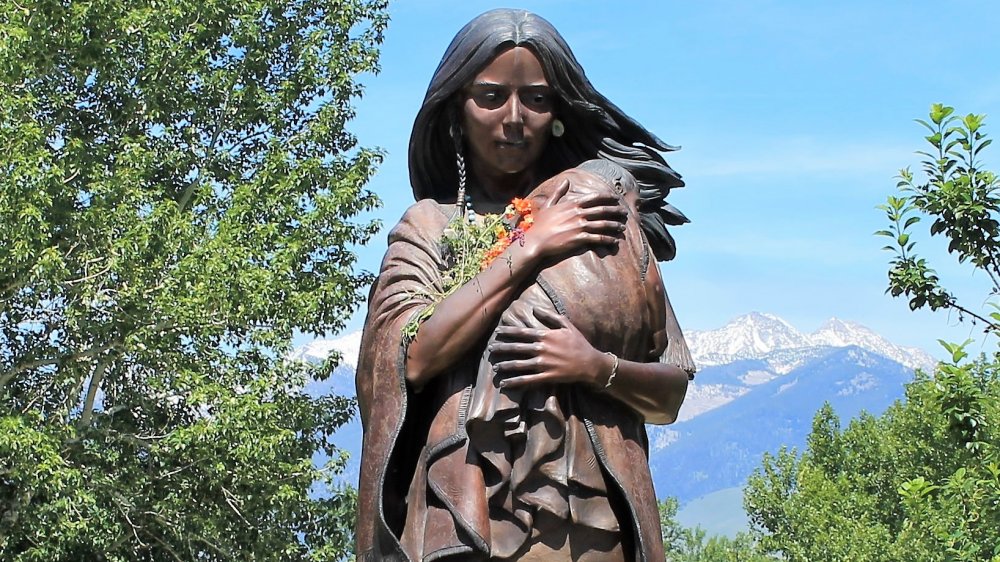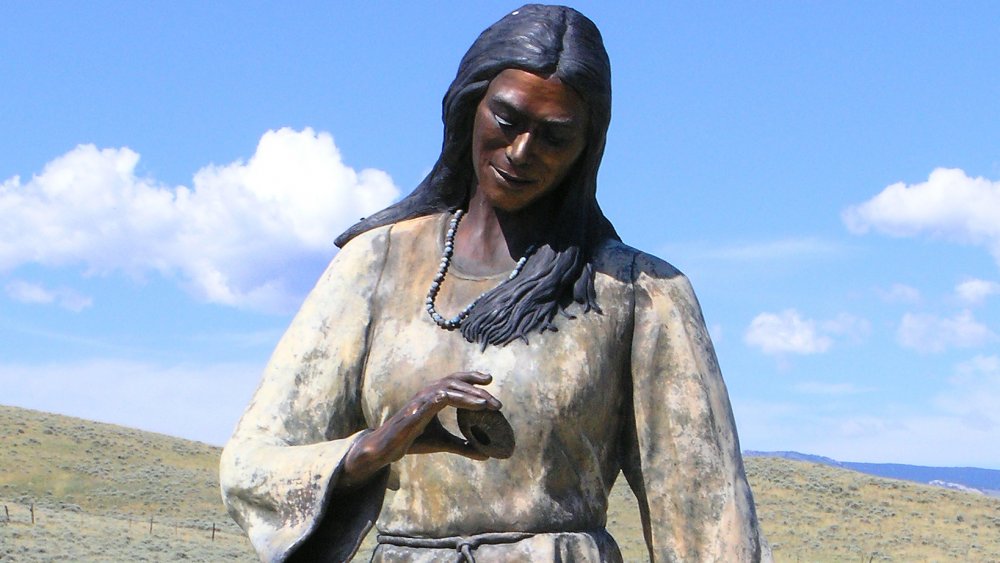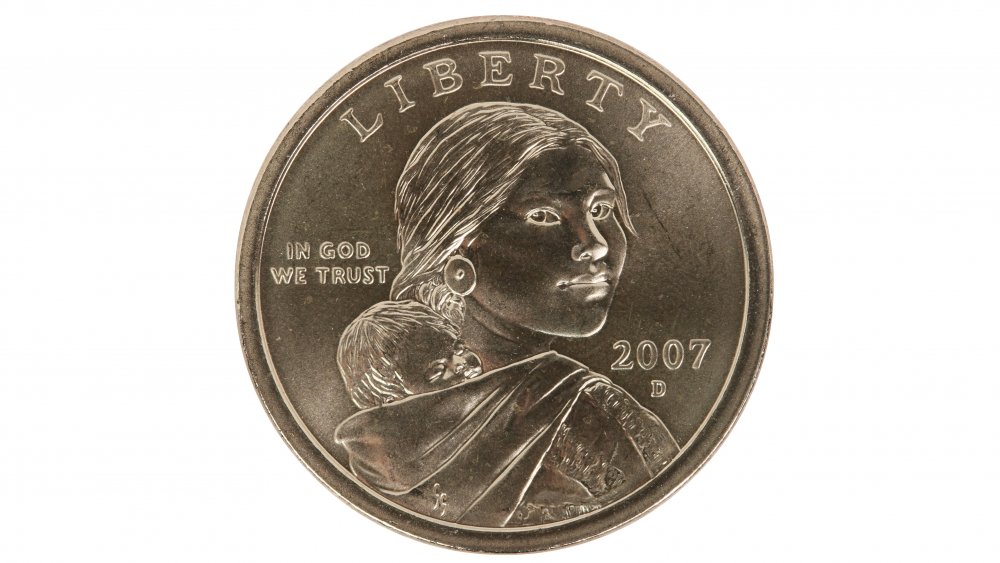The Truth About Sacajawea's Death
The story of the Lewis and Clark Expedition is as old as time, namely the time of the Louisiana Purchase. As History details, in 1803, President Thomas Jefferson roughly doubled the size of the United States by buying the Louisiana Territory from France. This largely uncharted land spanned about 828,000 square miles and eventually became 15 states. That vast expanse needed to be surveyed, thus beginning the historic adventure of Meriwether Lewis and William Clark. But it likely would have been a horrific misadventure if it weren't for their heroic Shoshone guide and bilingual translator, Sacajawea.
Lead them to the purchased land
Born sometime in the vicinity of 1788, Sacajawea was kidnapped at around age 12. Via PBS, she and another Shoshone captive were sold to French-Canadian fur trader Toussaint Charbonneau, who declared them his wives. According to History, two months after giving birth to her first child, Sacajawea embarked on the Lewis and Clark Expedition with her infant son in tow. She used her mastery of the Hidatsa and Shoshone languages to help negotiate vital horse trades and relay other important information.
Sacajawea and her baby may have been the only things preventing Native Americans in the area from perceiving the expedition as a hostile invasion. But she wasn't just an important resource; she was a rescuer. As recounted by the National Women's History Museum, when a storm threatened to capsize their boat and an expedition member threatened to shoot Charbonneau, Sacajawea saved the day by gathering important instruments, garments, and documents. Somehow, she achieved this feat while simultaneously taking care of her infant son.
One tough mother
Survival didn't come easy for the members of the Lewis and Clark Expedition. Per the University of Virginia, rain and treacherous terrain conspired against them as they braved the terrifyingly slippery Rocky Mountains. While situated 300 feet above the Missouri River, Meriwether Lewis took a 20-foot tumble that could have become a much longer drop had he not stopped himself. A year later, he slipped at a narrow pass and narrowly avoided falling 90 feet into the river. Luckily for Sacajawea, she "grew up surrounded by" the Rockies, according to History. She not only managed to navigate the danger but helped her fellow travelers traverse the Bozeman Pass in the mountains of Montana.
While fending off water and gravity, the group also came under attack from bacteria, insects, and sexually transmitted infection. Tainted jerky wreaked digestive havoc. At least three men came down with syphilis, and some historians suspect that Lewis suffered from the disease. In June 1805, Sacajawea contracted a nasty illness. For almost a week she had a weak pulse, a strong fever, respiratory problems, and "alarming twitching of her fingers and arms." Some medical historians have interpreted those symptoms as a sign that Sacajawea was grappling with gonorrhea or chronic pelvic inflammatory disease. Either way, she overcame it just like the other obstacles.
You only live once, but Sacajawea died twice
Given Sacajawea's historical significance, it's no wonder that this wonder woman is, as History put it, "possibly the most memorialized woman in the United States." In fact, she's so memorialized that she somehow has two different graves located hundreds of miles apart. At the Wind River Indian Reservation near Fort Washakie, Wyoming, a massive granite tombstone purports to mark the final resting place of Sacajawea. If so, then she died in 1884 at the ripe old age of 100. However, that tombstone may be gravely mistaken because about 600 miles away is a grave near Mobridge, South Dakota that claims to be Sacajawea's final resting place. And if the burial marker is to be believed, then she didn't even reach age 30, dying instead in December 1812 at around 24 or so years old.
Only the good die young
As History notes, William Clark wrote in his diary that Sacajawea died long before 1884. He also adopted her two children in 1813, suggesting that Sacajawea wasn't around to raise them. PBS further observes that based on the age listed at Wind River, Sacajawea would have been 21 when she traveled with Lewis and Clark, creating a clear inconsistency with other biographical details. Given the timing of the adoption, it would make sense if she perished in 1812, and expert James Ronda asserted that "most scholars" currently believe she was at least deceased by the time Clark documented it in his journal (sometime between 1825 and 1828).
How did this super mom and seemingly natural-born survivor expire? Some researchers theorize that she succumbed to "a serious illness" that plagued her throughout her adult life and may have been exacerbated by the birth of her second child, Lisette (alternatively spelled "Lizette"). History writes that she might have died of typhoid fever.
